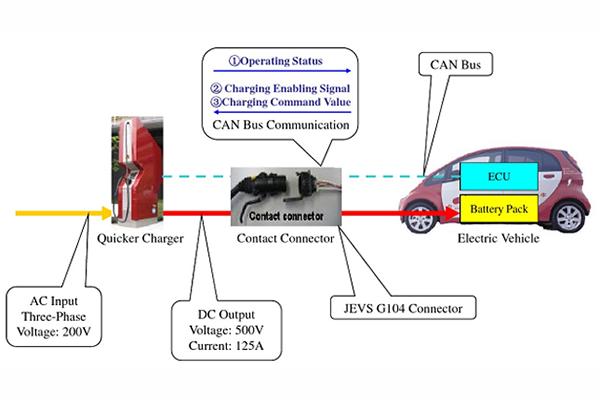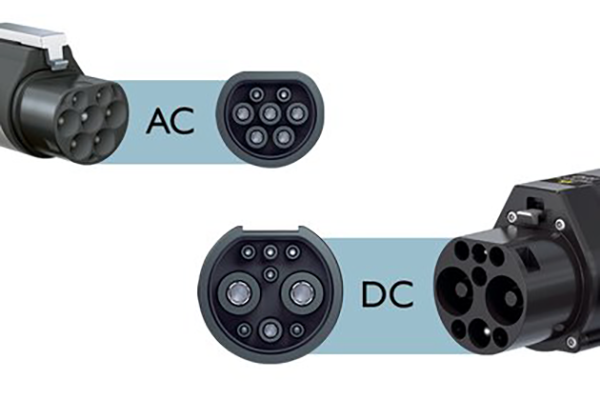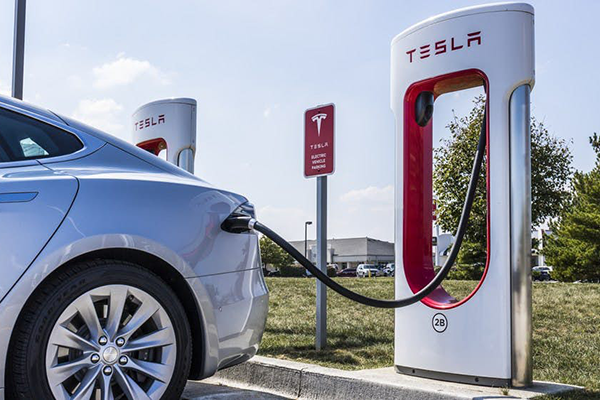With the rapid development of electric vehicles, EV charging stations and other supporting industries are also developing rapidly. Many countries are also competing fiercely for EV charging standards, and currently, there are three main camps regarding charging standards for new energy vehicles. The first is the Japanese CHAdeMO standard, which the Japan Electric Vehicle Association and the Japan Electric Vehicle Charging Association started in 2010 and was first introduced. Then there is the European and American camp, which uses the Combined Charging System (CCS) launched in 2012 by European and American Motors, as well as Tesla’s proprietary Supercharger, and finally, China’s GB/T, which was introduced at the end of 2015. This article will briefly introduce these significant electric vehicle charging standards.
CHAdeMO
The CHAdeMO standard was first introduced in 2010 by the Japan Electric Vehicle Association and the Japan Electric Vehicle Charging Association and is an abbreviation for Charge de Move, which translates from Japanese to mean “short charging time like a tea break.” The standard is included in the IEC61851-23,-24, and IEC62196 standards and currently supports up to 400 kW of charging power. The CHAdeMO standard uses the fast charging method shown in the figure below.

The current is controlled by the CAN bus signal of the car, i.e., while monitoring the battery status, the current value required for charging is calculated in real time, and a notification is sent to the charger through the communication line. The fast charger receives the current command from the car in time and provides the current as specified. The battery management system monitors the battery condition while controlling the current in real-time, realizing all the functions required for fast and safe charging.

Combined Charging System (CCS)
The Combined Charging System (CCS) is an electric vehicle charging standard jointly released by eight central German and U.S. automakers at the World Electric Vehicle Congress in Los Angeles, CA, in May 2012. The standard offers four charging modes: unidirectional A.C. charging, three-phase A.C. charging, D.C. charging, and D.C. ultra-fast charging. It can use Combo 1 or Combo 2 connectors to provide power at up to 350 kilowatts.
The most crucial feature of CCS is to realize fast charging and regular charging with one plug, adding two DC pins to the original AC charging interface to realize the conversion of AC charging and DC charging.

GB/T
China developed its charging system referred to by its Guabiao national standards as GB/T. There are two variations of GB/T plugs one for AC charging and one for DC fast charging. The GB/T AC charging plug is single-phase, delivering up to 7.4 kW. While it looks the same as the Type 2 plug, don’t be fooled—the pins and receptors are reversed.
The GB/T 20234 charging standard is mainly used in China. But nowadays, more and more Chinese electric cars are exported, and GB/T charging cables and GB/T EVSEs are used outside of China. Therefore, there is an increasing demand for this plugin in Southeast Asia, East Europe, and the Middle East.

Supercharger
The Supercharger network is the proprietary charging system for American electric cars. The giveaway is the vast ‘TESLA’ logo branded across the top of all the charging units. That’s right unless you have a Tesla of some sort, you can’t hook up to a Supercharger and get electricity for your vehicle from it… but that could change in the future, as CEO and general megalomaniac Elon Musk has said he is planning to open up the Supercharger network to non-Teslas. We shall wait to see how this develops in Europe.

As you can understand from the above discussion, there is a big difference between different standards, so it is not easy to unify them.














